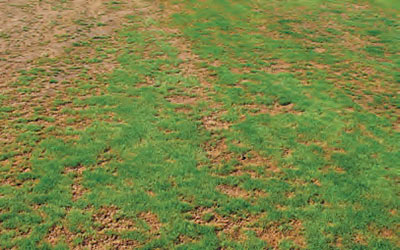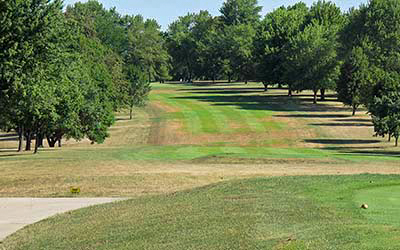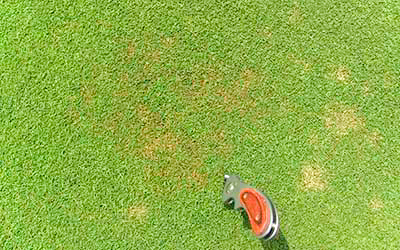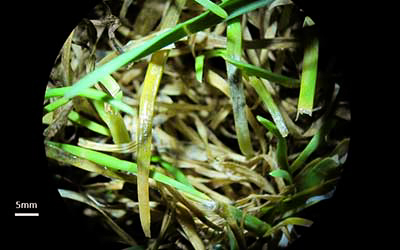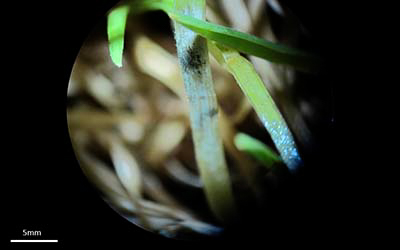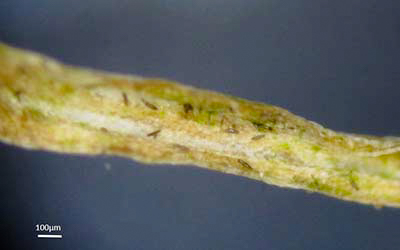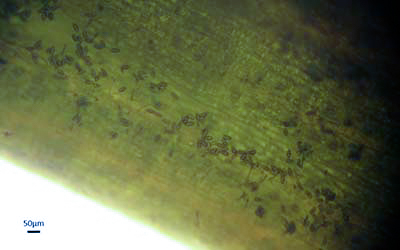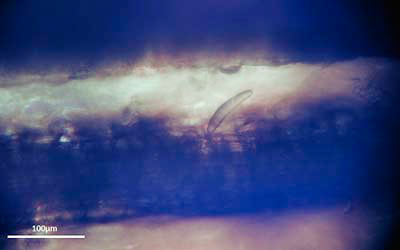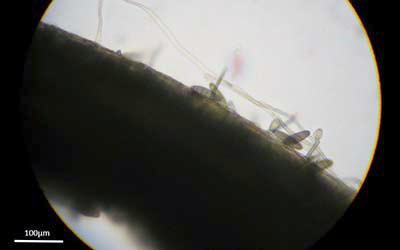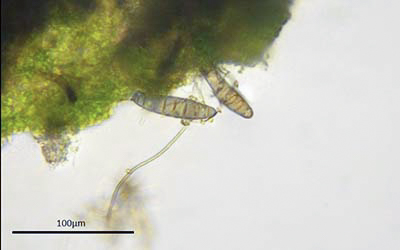Drechslera & Bipolaris spp. (mostly D. poae)
![]()
![]()
![]()
![]()
![]()
![]()
![]()
Hosts
Kentucky bluegrass
Disease description:
Leaf spot and melting out are common symptoms in bluegrass caused by Drechlsera and Bipolaris. These diseases can be particularly severe during the hot summer months on low-mow Kentucky bluegrasses used on sports fields and golf course fairways. Leaf spot symptoms occur during the early stages of this disease as small water-soaked areas that become uniformly dark, ranging from reddish brown to black and possibly surrounded by a yellow halo. Lesions can merge and cause dieback of entire leaves or plants. In the advanced melting-out stage of the disease, roots, rhizomes and crowns of Kentucky bluegrass can be rotted, causing irregular areas of wilting and chlorosis.
Control
Leaf spot / melting out diseases are most severe on turf that is growing slowly due to environmental stresses. Nitrogen applications that cause excessive turf growth during the hot summer months can predispose Kentucky bluegrass to this disease and result in severe infections. Areas that are extensively shaded, lack good drainage and are prone to long periods of leaf wetness are most susceptible to injury from this disease. Raise the mowing height when the disease is active and reduce thatch to eliminate pathogen reservoirs. The use of certain herbicides has been shown to result in more severe outbreaks of leaf spot diseases. Certain newly released cultivars exhibit partial to excellent resistance to leaf spot / melting out diseases, but other cultivars can be particularly susceptible. Fungicides that control the disease and reduce spore production are available but need to be applied at regular intervals.
Images
